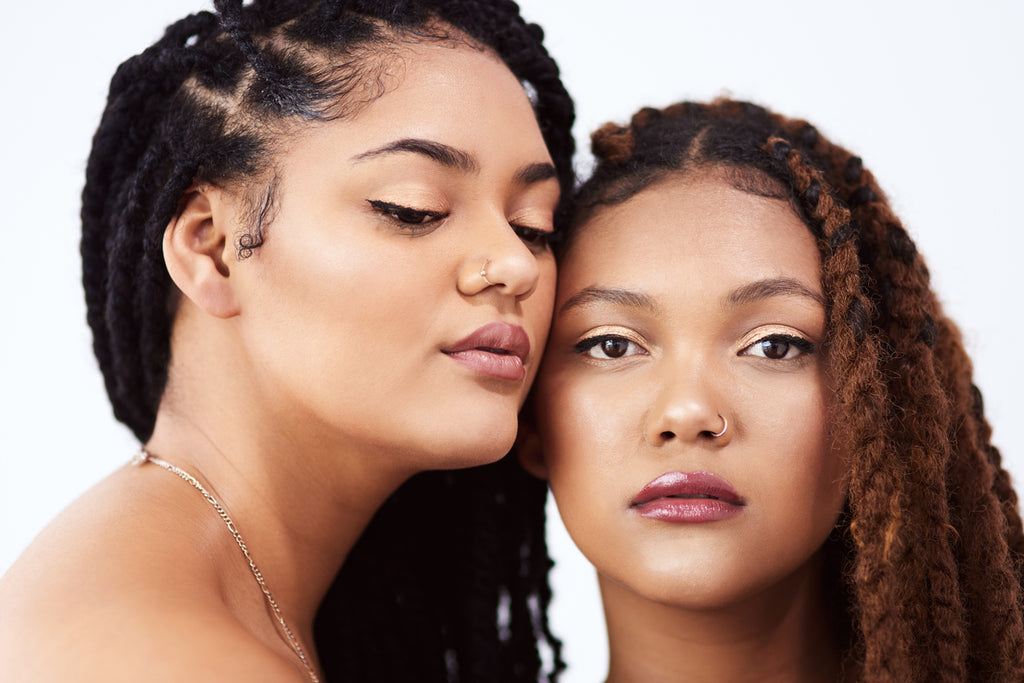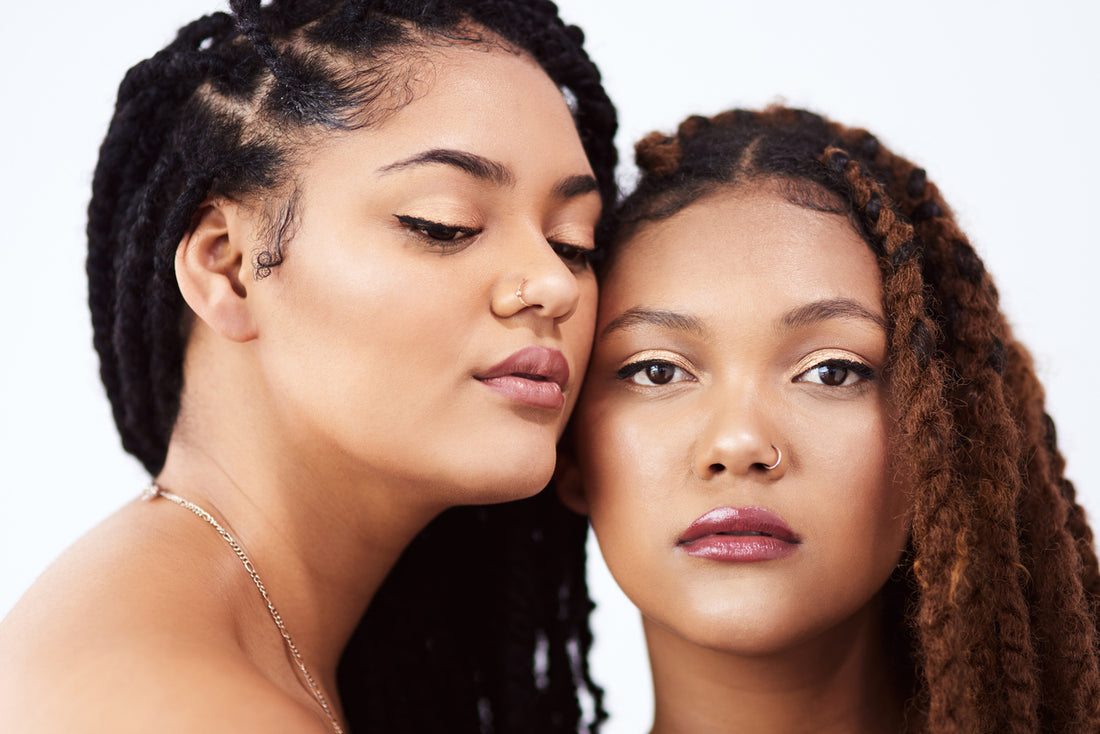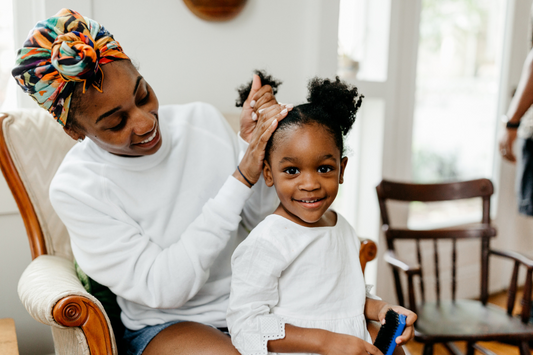
So your short-tapered cut just transformed into a teeny weeny afro – leaving you in the wonder of what to do with your hair whenever the Lakeside beach beckons you to go for a swim; say once a week.
Well, your hair dilemma is understandable. Heck, wash day (as women across the curl-hair-pattern spectrum will appreciate) can be quite a chore.
Shampooing, deep conditioning, blow-drying or detangling, and two-strands twisting can become a 4-hour feat. And with the current economy, ain't nobody got time for that!
The silver lining, the box braids, got your back on all matters swimming lessons, summer vacations, winter outdoors, and protective styling needs. They are known to cut your hair styling time in half.
And being a protective style, box braids have numerous benefits; as hair Professional Robin Groover explains, "The benefits of healthy protective styling are length retention, stress-free maintenance, and versatility. The objective is healthy hair with style ease that does not require lots of time to look good."
However, reaping the benefits calls for proper maintenance, mostly if your type 3 or type 4 hair is known to make the neat braids unravel a few days after their installation.
Proper maintenance is possible with the following top tips for box braids maintenance: keeping your neat braids looking on fleek, longer.
What to Do Before Braiding
As the adage goes, the lifespan of your box braids is majorly dependent on the pre-braid process. That is, washing your hair, prepping your scalp, preparing the braid extensions, and whatnot.
To that end:
Select a Protective Style that's Easy to Maintain
Type 3 and 4 hair types are known for their frequent need for hydration and moisturization – as scalp natural oils take time to travel down the hair shaft thanks to the curl platter.
Thus, select a box braid style with which it's easy to hydrate and moisturize your natural hair.
Crochet braids, Ghana braids, goddess braids, and poetic justice braids are the popular braiding styles, but you can always get creative.
With style on board, decide on the braid thickness, length, and, if need be, color.
Ideally, the hairstyle should not be too heavy to cause tension on your strands nor too thick to limit an easy-access to your scalp – for cleaning purposes.
The length should be comfortable, too, as not to interfere with your daily routine, including sleeping.
Next, decide whether you'll be using your hair, extensions, or a mixture of both for that voluminous look. And when using extensions, opt for human hair extensions whenever possible. Though expensive than synthetic extensions, they provide a more natural hairstyle and are free from chemical-based linings known to cause itching and flaky scalp.
Select a Skilled Stylist
Settle for a hairstylist who is skilled in box braids, preferred style, hair types, and, if possible facial features.
Look at them on Instagram. Do the photos of their previous work build your confidence? Do the images look like the stylish cares about your natural hair growth?
Also, can the stylist use photos of your preferred hairdo as a reference? Or must you name the correct style and method?
In short, do your due diligence to ensure that your stylist is a fit for both you and your natural hair.
Wash and Treat Your Natural Hair
Before installing the protective style, ensure your hair is thoroughly washed, detangled, and trimmed.
Treat that dry scalp with an appropriate hair mask, detangle your kinky hair with the right moisture-based detangler, and remedy those dry ends with deep moisturizing products packed with hair nourishing ingredients.
In any case, washing and treating your hair before the box braids installation will help your natural hair retain moisture. Just don't overdo it to the extent of blocking pores on your scalp.
And while at it, pre-treat the hair extensions to prevent the infamous braid itch.
What to Do When Braiding
When it's time for the rewarding marathon, a.k.a. braid installation, take caution for a messy or wrong technique that can damage your hair.
Go with a knotless style as opposed to the traditional methods of box braids installation – and your paracetamol stores and scalp will be eternally grateful.
The knotless style avoids knots at the hair roots, causing tension on the scalp – leading to breakage or growth impairment of your natural hair.
Also, knotless braids are highly customizable, easy to refresh, and allow for complete movement on the scalp, making it relatively easy to sleep.
The grip should not be too tight to cause hair loss (or traction alopecia for the science lovers).
And if possible, use a heavy pomade to help your hair blend in with the braiding extension/hair.
What to Do After Braiding
With the installation complete comes the question: "how will I sleep?"
We all dread that "new-hair" pain and strive not to toss and turn in bed for the next couple of days or so.
Regardless, the end of the installation process marks the beginning of the maintenance period, which, if done correctly, should have your box braids looking fresh for longer.
To do so:
Trim Fly-aways
Your stylist will probably use a lighter or water to "seal" the braids' ends and pair of scissors to eliminate the fly-aways.
Once you get home, though, inspect your braids and eliminate additional fly-aways with scissors or other appropriate tools.
To avoid cutting your precious hair, ensure you distinguish between the end of your natural hair and the beginning of the extension strands.
Pamper your Edges
Remember that "new-hair" pain we mentioned?
Instead of getting all angry and cursing your stylist for really pulling your hair, pamper your edges with appropriate essential oils (think coconut oil).
If you wrap a towel dipped in hot water around the edges, it can also relieve the pain.
And since you might be dying to lay your edges, use an alcohol-free styling product intermittently.
Cover it up at Night
Whether your box braids constitute your natural hair, extensions, or a mixture of the two, you must wrap it up while sleeping – if the hairdo is to look fresh for longer.

Note, hair (human or not) tends to fray more when hit by the friction between it and your beddings. And frayed hair means puffy roots for when new growth starts.
Thus, tie your hair down when sleeping to prevent the said ordeals.
Invest in a satin headscarf/bonnet, a satin pillowcase, and a silk pillow, and your hairstyle will be grateful for looking on fleek, even after a night of heavy tosses and turns.
You don't have to invest in all of the items though, a satin scarf (if properly secured) is enough to maintain your edges.
Style with Care
And now, here's the moment you've been waiting for - time to make a killing with 'em braids.
But before you pull that chic ponytail look, appreciate that your braids (as fabulous as they look) are prone to wear and tear.
Being rough on them will easily create fly-aways or, worse, pull the braid out alongside your natural hair.
Thus, style the braids with care.
Use your fingers over-styling tools, watch your fingernails when styling, and use protectively coated ponytail holders, bobby pins, and other accessories.
Use water-based styling mousse and apply moisturizing or hydrating products with a strong-hold to keep your natural hair (underneath the braids) moisturized.
Finish off the styling process with a hair spray for that extra shine even on the greyest days.
And if your curly hair often frizzes up and pop out of the braids in a week or two (after installation), go for styles that easily mask stray hairs. Think faux locs or yarn braids.
Keep it Moisturized
Use your favorite hair moisturizing sprays and oils to keep the braids soft and shiny. While at it, oil the scalp and spray the hair with a live-in-conditioner at least once a week to promote growth and prevent breakage.
Here, the aim is to lock in moisture while giving a new-growth elasticity when the box braids begin to tug at the roots.
Thus, invest in a hair spray or moisturizing oils free from mineral oils as the latter may build up.
Wash the Hair Bi-Weekly
Do not over-wash (at most once in every fortnight) your braids as over-washing can dry both the natural and extension hair.
Besides, it's challenging to achieve a uniform distribution of moisture across the strands while washing, resulting in inconsistent hair growth and breakage.
When you do need to wash (you know, to remove buildups and keep the braids looking fresh), clean the braids in sections to have control over the updo.
Use lightweight shampoo to allow for a thorough cleansing process without any residual effects.
Don't jump right under the showerhead; instead, use a small wet flannel to easily glide in-between the partings.
In the end, focus on your scalp more than anything else. If you can add a powerful astringent to distilled water and oils containing soothing and antibacterial properties, mix them properly, and upon spraying them on the scalp. The mixture ends up reducing flakes, itching and soothes the scalp without causing any frizz up – then you can do away with washing the braids altogether.
Thus, opt for scalp treatment or rinse as it does prevent not only frizz ups but also the need to dry your hair- which FYI could be a lot of work.
Re-touch by Section
Consider re-dipping the ends of your braids in hot water (every couple of weeks) to rid them of that dull matte look.
Use a lightweight styling gel or mousse to tame stubborn fly-aways on the braids. Note, a mousse is better at taming the rebel strands without product buildup – so the mousse it is?
With time, re-touch the front, edges, and loose section of the braids with products similar to those used during the braids installation. In so doing, you can prolong your braids' lifespan by two weeks – saving yourself some bucks.
Whatever you do, do not re-twist your hair roots, as that can damage the hair.
And that's it.
Now go forth and maintain your box braids for 6 to 8 weeks, even with your curly type 3 or type 4 hair.
And for flexibility in your protective styling accessories, healthier hair care products, or the life-changing reverse-air hairdryer, Revair got your back. We leverage technology to bring you hair (accessories and products) options that give you flexibility and power to maintain and style your natural and protective hair in a natural, healthy way.






